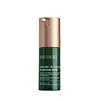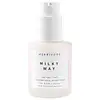What's inside
What's inside
 Key Ingredients
Key Ingredients

 Benefits
Benefits

 Concerns
Concerns

 Ingredients Side-by-side
Ingredients Side-by-side

Water
Skin ConditioningCaprylic/Capric Triglyceride
MaskingLactic Acid
BufferingSqualane
EmollientGlycerin
HumectantSodium Hydroxide
BufferingCetearyl Olivate
Propanediol
SolventSorbitan Olivate
EmulsifyingCetearyl Alcohol
EmollientLespedeza Capitata Leaf/Stem Extract
Skin ConditioningPolyacrylate Crosspolymer-6
Emulsion StabilisingAcacia Senegal Gum
MaskingSodium Gluconate
Skin ConditioningXanthan Gum
EmulsifyingPhenoxyethanol
PreservativeEthylhexylglycerin
Skin ConditioningLavandula Angustifolia Oil
MaskingLinalool
PerfumingWater, Caprylic/Capric Triglyceride, Lactic Acid, Squalane, Glycerin, Sodium Hydroxide, Cetearyl Olivate, Propanediol, Sorbitan Olivate, Cetearyl Alcohol, Lespedeza Capitata Leaf/Stem Extract, Polyacrylate Crosspolymer-6, Acacia Senegal Gum, Sodium Gluconate, Xanthan Gum, Phenoxyethanol, Ethylhexylglycerin, Lavandula Angustifolia Oil, Linalool
Water
Skin ConditioningPropanediol
SolventSimmondsia Chinensis Seed Oil
EmollientSodium Hydroxide
BufferingLactic Acid
BufferingGlycolic Acid
BufferingGluconolactone
Skin ConditioningCetearyl Olivate
Sorbitan Olivate
EmulsifyingOctyldodecanol
EmollientGlycerin
HumectantMalic Acid
BufferingTartaric Acid
BufferingCitric Acid
BufferingSqualane
EmollientAvena Sativa Kernel Extract
AbrasiveCeramide NP
Skin ConditioningCeramide AP
Skin ConditioningMicrocitrus Australasica Fruit Extract
Tremella Fuciformis Sporocarp Extract
AntioxidantHyaluronic Acid
Humectant1,2-Hexanediol
Skin ConditioningXanthan Gum
EmulsifyingDiheptyl Succinate
EmollientCapryloyl Glycerin/Sebacic Acid Copolymer
Skin ConditioningOryza Sativa Bran Extract
Skin ConditioningSclerotium Gum
Emulsion StabilisingLecithin
EmollientPullulan
Caprylhydroxamic Acid
Trisodium Ethylenediamine Disuccinate
Helianthus Annuus Seed Oil
EmollientTriethyl Citrate
MaskingRosmarinus Officinalis Leaf Extract
AntimicrobialTocopherol
AntioxidantSilica
Abrasive2,3-Butanediol
HumectantGlyceryl Stearate
EmollientPrunus Amygdalus Dulcis Oil
Skin ConditioningSodium Lactate
BufferingHydrogenated Lecithin
EmulsifyingGamma-Octalactone
PerfumingVanillin
MaskingGlyceryl Caprylate
EmollientIsoamyl Acetate
SolventBenzaldehyde
MaskingAnisaldehyde
MaskingMaltol
MaskingPhytosphingosine
Skin ConditioningEthylhexylglycerin
Skin ConditioningDimethylhydroxy Furanone
MaskingWater, Propanediol, Simmondsia Chinensis Seed Oil, Sodium Hydroxide, Lactic Acid, Glycolic Acid, Gluconolactone, Cetearyl Olivate, Sorbitan Olivate, Octyldodecanol, Glycerin, Malic Acid, Tartaric Acid, Citric Acid, Squalane, Avena Sativa Kernel Extract, Ceramide NP, Ceramide AP, Microcitrus Australasica Fruit Extract, Tremella Fuciformis Sporocarp Extract, Hyaluronic Acid, 1,2-Hexanediol, Xanthan Gum, Diheptyl Succinate, Capryloyl Glycerin/Sebacic Acid Copolymer, Oryza Sativa Bran Extract, Sclerotium Gum, Lecithin, Pullulan, Caprylhydroxamic Acid, Trisodium Ethylenediamine Disuccinate, Helianthus Annuus Seed Oil, Triethyl Citrate, Rosmarinus Officinalis Leaf Extract, Tocopherol, Silica, 2,3-Butanediol, Glyceryl Stearate, Prunus Amygdalus Dulcis Oil, Sodium Lactate, Hydrogenated Lecithin, Gamma-Octalactone, Vanillin, Glyceryl Caprylate, Isoamyl Acetate, Benzaldehyde, Anisaldehyde, Maltol, Phytosphingosine, Ethylhexylglycerin, Dimethylhydroxy Furanone
 Reviews
Reviews

Ingredients Explained
These ingredients are found in both products.
Ingredients higher up in an ingredient list are typically present in a larger amount.
Cetearyl Olivate is an emulsifier and texture enhancer. It is derived from the fatty acids of olive oil and Cetearyl alcohol, and is biodegradable.
As an emulsifier, it is used to prevent oils and waters from separating. It can also
Manufacturers use the name Olivem 1000. This ingredient has been found to preserve the natural microbiome of skin. Having a healthy microbiome helps keep our skin healthy and protects against harmful bacteria. This ingredient is grouped with Sorbitan Olivate under the name Olivem 1000.
Learn more about Cetearyl OlivateEthylhexylglycerin (we can't pronounce this either) is commonly used as a preservative and skin softener. It is derived from glyceryl.
You might see Ethylhexylglycerin often paired with other preservatives such as phenoxyethanol. Ethylhexylglycerin has been found to increase the effectiveness of these other preservatives.
Glycerin is already naturally found in your skin. It helps moisturize and protect your skin.
A study from 2016 found glycerin to be more effective as a humectant than AHAs and hyaluronic acid.
As a humectant, it helps the skin stay hydrated by pulling moisture to your skin. The low molecular weight of glycerin allows it to pull moisture into the deeper layers of your skin.
Hydrated skin improves your skin barrier; Your skin barrier helps protect against irritants and bacteria.
Glycerin has also been found to have antimicrobial and antiviral properties. Due to these properties, glycerin is often used in wound and burn treatments.
In cosmetics, glycerin is usually derived from plants such as soybean or palm. However, it can also be sourced from animals, such as tallow or animal fat.
This ingredient is organic, colorless, odorless, and non-toxic.
Glycerin is the name for this ingredient in American English. British English uses Glycerol/Glycerine.
Learn more about GlycerinLactic Acid is another well-loved alpha hydroxy acid (AHA). It is gentler than glycolic acid but still highly effective.
Its main role is to exfoliate the surface of the skin by loosening the “glue” that holds dead skin cells together. Shedding those old cells leads to smoother, softer, and more even-toned skin.
Because lactic acid molecules are larger than glycolic acid, they don’t penetrate as deeply. This means they’re less likely to sting or irritate, making it a great choice for beginners or those with sensitive skin.
Like glycolic acid, it can:
Lactic acid also acts as a humectant (like hyaluronic acid). It can draw water into the skin to improve hydration and also plays a role in the skin's natural moisturizing factor (NMF) in the form of sodium lactate.
Studies show it can boost ceramide production to strengthen the skin barrier and even help balance the skin’s microbiome.
To get results, choose products with a pH between 3-4.
Lower strengths (5-12%) focus on surface exfoliation; higher strengths (12% and up) can reach deeper in the dermis (deeper, supportive layer) to improve skin texture and firmness over time.
Though it was originally derived from milk, most modern lactic acid used in skincare is vegan. It is made through non-dairy fermentation to create a bio-identical and stable form suitable for all formulations.
When lactic acid shows up near the end of an ingredient list, it usually means the brand added just a tiny amount to adjust the product’s pH.
Legend has it that Cleopatra used to bathe in sour milk to help reduce wrinkles.
Lactic acid is truly a gentle multitasker: it exfoliates, hydrates, strengthens, and brightens. It's a great ingredient for giving your skin a smooth, glowing, and healthy look without the harshness of stronger acids.
Read more about some other popular AHA's here:
Learn more about Lactic AcidPropanediol is an all-star ingredient. It softens, hydrates, and smooths the skin.
It’s often used to:
Propanediol is not likely to cause sensitivity and considered safe to use. It is derived from corn or petroleum with a clear color and no scent.
Learn more about PropanediolSodium Hydroxide is also known as lye or caustic soda. It is used to adjust the pH of products; many ingredients require a specific pH to be effective.
In small amounts, sodium hydroxide is considered safe to use. However, large amounts may cause chemical burns due to its high alkaline.
Your skin has a natural pH and acid mantle. This acid mantle helps prevent harmful bacteria from breaking through. The acid mantle also helps keep your skin hydrated.
"Alkaline" refers to a high pH level. A low pH level would be considered acidic.
Learn more about Sodium HydroxideSorbitan Olivate is created from the fatty acids in olive oil and sorbitol.
This ingredient is an oil in water emulsifier. It helps stabilize a product by preventing oils and waters from separating. Sorbitan Olivate also helps hydrate the skin.
Manufacturers sell sorbitan olivate under the name OliveM 1000. OliveM 1000 a multifunctional ingredient. It is self-emulsifying. According to a manufacturer, OliveM 1000 does not disrupt natural skin biome.
Due to its olive oil base, this ingredient may not be fungal-acne safe.
Learn more about Sorbitan OlivateSqualane is an emollient that helps the skin hold onto moisture. It's an oily liquid that occurs naturally in certain types of fish and plant oils.
Because squalane boosts hydration in the skin, it also comes with plenty of benefits: it is an antioxidant and can help fight free radicals and skin damage. Squalane is also found to have a detoxifying effect when applied.
Squalane comes from squalene, which occurs naturally within the sebum of our skin. It is one of the oils our skin produces to keep itself hydrated. Squalane is the hydrogenated version of squalene and has a longer shelf life.
Research shows that squalane is non-irritating (even at 100% concentration).
In general, it's a fantastic ingredient. It does a great job at hydrating the skin, and it's suitable for those with sensitive skin.
The source of squalane may impact malassezia / fungal acne. This is because olive oil derived squalane can contain impurities such as fatty acids and plant waxes. Sugarcane derived squalane is recommended for anyone with malassezia concerns.
Is squalane vegan?
This depends on the source. Squalane can be derived from both plants and animals. Most squalane used in skincare comes from plants.
Please note: the source of squalane is only known if disclosed by the brand. We recommend reaching out to the brand if you have any questions about their squalane.
Read more about squalene with an "e".
Is squalane an oil?
Squalane is often called an oil, but it’s technically not; it’s a hydrocarbon, meaning it’s only made of carbon and hydrogen, unlike true oils which are triglycerides made of fatty acids and glycerol.
The term “oil-free” isn’t regulated, so companies can define it however they want. Some exclude all oils, while others just avoid mineral oil or comedogenic oils.
While some people avoid oils thinking they cause breakouts, the right kind of oil (or oil-like ingredient like squalane) can actually help balance and hydrate your skin. It’s worth testing out simple oils or squalane to see what works best for your skin.
Learn more about SqualaneWater. It's the most common cosmetic ingredient of all. You'll usually see it at the top of ingredient lists, meaning that it makes up the largest part of the product.
So why is it so popular? Water most often acts as a solvent - this means that it helps dissolve other ingredients into the formulation.
You'll also recognize water as that liquid we all need to stay alive. If you see this, drink a glass of water. Stay hydrated!
Learn more about WaterXanthan gum is used as a stabilizer and thickener within cosmetic products. It helps give products a sticky, thick feeling - preventing them from being too runny.
On the technical side of things, xanthan gum is a polysaccharide - a combination consisting of multiple sugar molecules bonded together.
Xanthan gum is a pretty common and great ingredient. It is a natural, non-toxic, non-irritating ingredient that is also commonly used in food products.
Learn more about Xanthan Gum